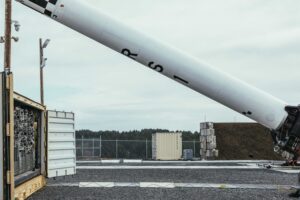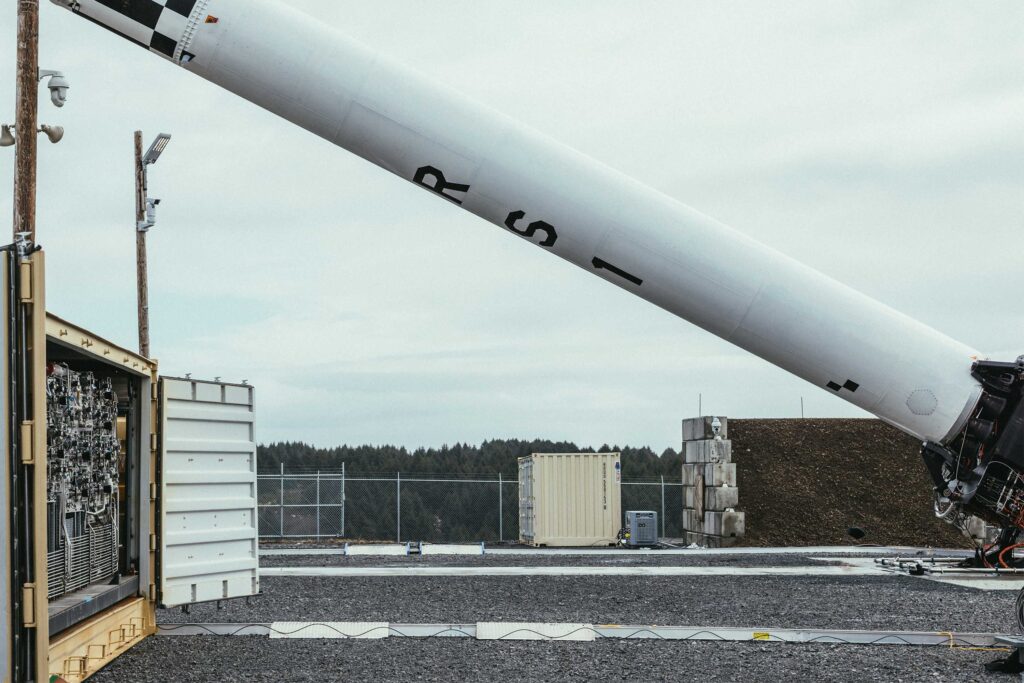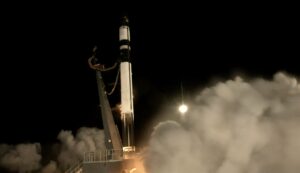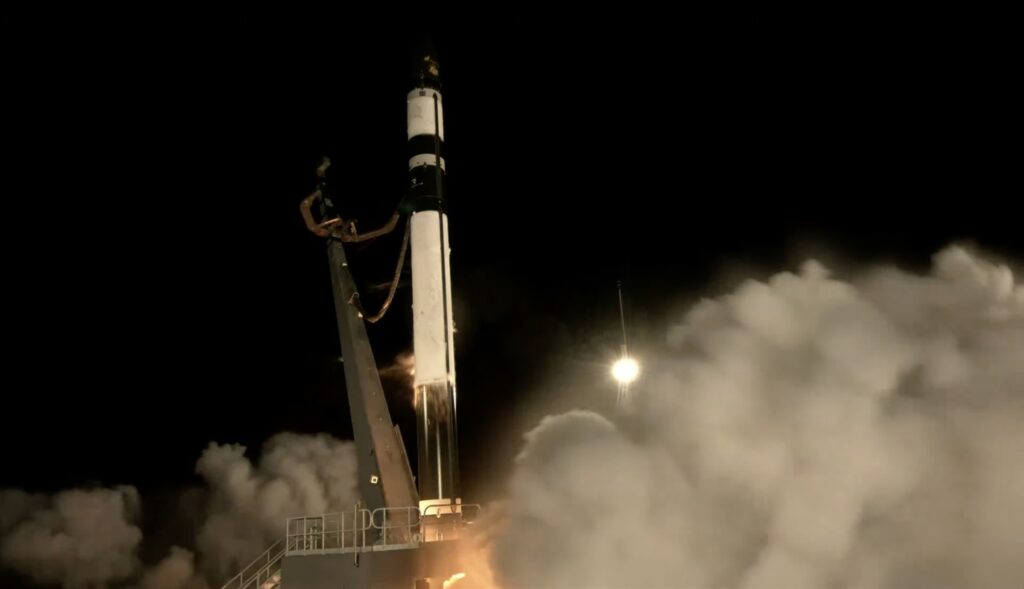Satellogic and SkyWatch increase access to timely earth observation data
Tuesday, 19 September 2023 09:34
Paris, France (SPX) Sep 15, 2023
 Satellogic Inc. (NASDAQ: SATL), has announced at World Satellite Business Week, their partnership to bring the highest resolution commercially available EO data to EarthCache customers.
Satellogic's EO data is now available via SkyWatch's EarthCache platform. EarthCache provides an intuitive interface and robust API that enables customers to browse archive data, as well as task new satelli
Satellogic Inc. (NASDAQ: SATL), has announced at World Satellite Business Week, their partnership to bring the highest resolution commercially available EO data to EarthCache customers.
Satellogic's EO data is now available via SkyWatch's EarthCache platform. EarthCache provides an intuitive interface and robust API that enables customers to browse archive data, as well as task new satelli
 Satellogic Inc. (NASDAQ: SATL), has announced at World Satellite Business Week, their partnership to bring the highest resolution commercially available EO data to EarthCache customers.
Satellogic's EO data is now available via SkyWatch's EarthCache platform. EarthCache provides an intuitive interface and robust API that enables customers to browse archive data, as well as task new satelli
Satellogic Inc. (NASDAQ: SATL), has announced at World Satellite Business Week, their partnership to bring the highest resolution commercially available EO data to EarthCache customers.
Satellogic's EO data is now available via SkyWatch's EarthCache platform. EarthCache provides an intuitive interface and robust API that enables customers to browse archive data, as well as task new satelli Showcase your climate data visualisation talent with ESA
Tuesday, 19 September 2023 09:34
Paris (ESA) Sep 15, 2023
 Are you a creative visionary with a passion for climate action? Enter ESA's latest competition to showcase your talent by transforming decades of satellite climate data into impactful visuals to help bridge the gap between climate science, policy makers and the wider public. The winner will have the unique opportunity to display their data visualisation at the 2023 United Nations Climate Change
Are you a creative visionary with a passion for climate action? Enter ESA's latest competition to showcase your talent by transforming decades of satellite climate data into impactful visuals to help bridge the gap between climate science, policy makers and the wider public. The winner will have the unique opportunity to display their data visualisation at the 2023 United Nations Climate Change
 Are you a creative visionary with a passion for climate action? Enter ESA's latest competition to showcase your talent by transforming decades of satellite climate data into impactful visuals to help bridge the gap between climate science, policy makers and the wider public. The winner will have the unique opportunity to display their data visualisation at the 2023 United Nations Climate Change
Are you a creative visionary with a passion for climate action? Enter ESA's latest competition to showcase your talent by transforming decades of satellite climate data into impactful visuals to help bridge the gap between climate science, policy makers and the wider public. The winner will have the unique opportunity to display their data visualisation at the 2023 United Nations Climate Change Spire Global selected by Estuaire to monitor and reduce aviation emissions
Tuesday, 19 September 2023 09:34
Vienna VA (SPX) Sep 18, 2023
 Spire Global was selected by Estuaire, a data firm empowering the aviation industry to reduce its environmental impact, to supply global aviation insights. Spire will provide its detailed aircraft positional data, as well as its Flight Report, which aggregates hundreds of millions of daily satellite and terrestrial ADS-B positions into an easily accessible one-row-per-flight information enriched
Spire Global was selected by Estuaire, a data firm empowering the aviation industry to reduce its environmental impact, to supply global aviation insights. Spire will provide its detailed aircraft positional data, as well as its Flight Report, which aggregates hundreds of millions of daily satellite and terrestrial ADS-B positions into an easily accessible one-row-per-flight information enriched
 Spire Global was selected by Estuaire, a data firm empowering the aviation industry to reduce its environmental impact, to supply global aviation insights. Spire will provide its detailed aircraft positional data, as well as its Flight Report, which aggregates hundreds of millions of daily satellite and terrestrial ADS-B positions into an easily accessible one-row-per-flight information enriched
Spire Global was selected by Estuaire, a data firm empowering the aviation industry to reduce its environmental impact, to supply global aviation insights. Spire will provide its detailed aircraft positional data, as well as its Flight Report, which aggregates hundreds of millions of daily satellite and terrestrial ADS-B positions into an easily accessible one-row-per-flight information enriched SynMax announces acquisition of Gas Vista in energy and maritime intelligence push
Tuesday, 19 September 2023 09:34
Houston TX (SPX) Sep 18, 2023
 SynMax, a pioneering geospatial intelligence company, announced the successful acquisition of Gas Vista, a premier maritime energy trade flow analytics and visualization company renowned for its innovative LNG product, Leviaton. This strategic acquisition stems from Gas Vista's advanced technological capabilities, deep industry knowledge, and impressive network. Their core competencies perfectly
SynMax, a pioneering geospatial intelligence company, announced the successful acquisition of Gas Vista, a premier maritime energy trade flow analytics and visualization company renowned for its innovative LNG product, Leviaton. This strategic acquisition stems from Gas Vista's advanced technological capabilities, deep industry knowledge, and impressive network. Their core competencies perfectly
 SynMax, a pioneering geospatial intelligence company, announced the successful acquisition of Gas Vista, a premier maritime energy trade flow analytics and visualization company renowned for its innovative LNG product, Leviaton. This strategic acquisition stems from Gas Vista's advanced technological capabilities, deep industry knowledge, and impressive network. Their core competencies perfectly
SynMax, a pioneering geospatial intelligence company, announced the successful acquisition of Gas Vista, a premier maritime energy trade flow analytics and visualization company renowned for its innovative LNG product, Leviaton. This strategic acquisition stems from Gas Vista's advanced technological capabilities, deep industry knowledge, and impressive network. Their core competencies perfectly Moon crew visits European powerhouse
Tuesday, 19 September 2023 09:00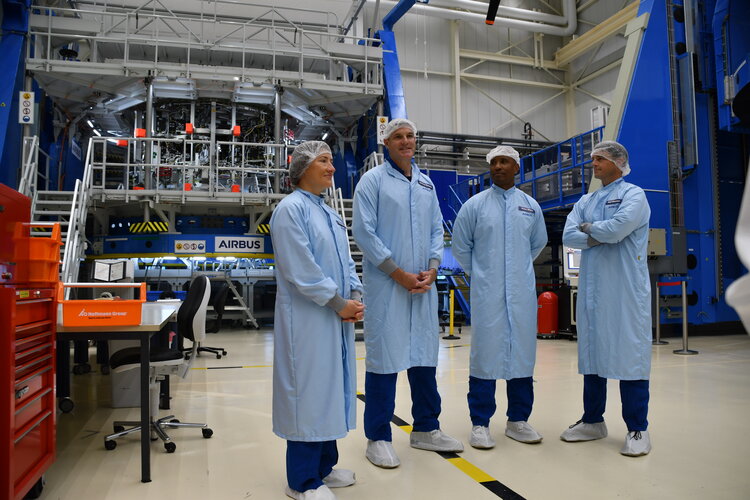 Image:
From left: the Artemis II astronauts, Christina Koch, Jeremy Hansen, Victor Glover, and Reid Wiseman, visited the European Service Module (ESM) assembly hall at Airbus in Bremen, Germany, last week.
Image:
From left: the Artemis II astronauts, Christina Koch, Jeremy Hansen, Victor Glover, and Reid Wiseman, visited the European Service Module (ESM) assembly hall at Airbus in Bremen, Germany, last week. ESA looks to transform Europe’s space transportation capability
Tuesday, 19 September 2023 06:30
On Earth, raw materials and finished goods move from source to destination with the help of a highly developed logistics network. ESA believes the same will be true in space in the future – made possible by a new generation of reusable launchers, in-space delivery vehicles and orbiting fuel depots.
Purdue scientist among first to examine asteroid pieces from OSIRIS-REx mission
Tuesday, 19 September 2023 06:27
West Lafayette IN (SPX) Sep 19, 2023
 To study the planets, someone has to go there: Either a human or a bot launches into space to physically explore other worlds. Scientists who study extraterrestrial materials can't usually bring their work home.
That's exactly what's happening this month, though, as NASA's OSIRIS-REx project brings home pieces of the asteroid Bennu.
The culmination of more than a decade of work by a
To study the planets, someone has to go there: Either a human or a bot launches into space to physically explore other worlds. Scientists who study extraterrestrial materials can't usually bring their work home.
That's exactly what's happening this month, though, as NASA's OSIRIS-REx project brings home pieces of the asteroid Bennu.
The culmination of more than a decade of work by a
 To study the planets, someone has to go there: Either a human or a bot launches into space to physically explore other worlds. Scientists who study extraterrestrial materials can't usually bring their work home.
That's exactly what's happening this month, though, as NASA's OSIRIS-REx project brings home pieces of the asteroid Bennu.
The culmination of more than a decade of work by a
To study the planets, someone has to go there: Either a human or a bot launches into space to physically explore other worlds. Scientists who study extraterrestrial materials can't usually bring their work home.
That's exactly what's happening this month, though, as NASA's OSIRIS-REx project brings home pieces of the asteroid Bennu.
The culmination of more than a decade of work by a Germany signs the Artemis Accords
Tuesday, 19 September 2023 06:27
Berlin, Germany (SPX) Sep 19, 2023
 The Moon and Mars are the next big topics for exploration in the coming years. The USA is preparing the next steps towards the Moon and Mars with its Artemis programme. In order to become part of this important stage in space history, on 14 September 2023, Member of the DLR Executive Board and Director General of the German Space Agency at the German Aerospace Center, Walther Pelzer signed the A
The Moon and Mars are the next big topics for exploration in the coming years. The USA is preparing the next steps towards the Moon and Mars with its Artemis programme. In order to become part of this important stage in space history, on 14 September 2023, Member of the DLR Executive Board and Director General of the German Space Agency at the German Aerospace Center, Walther Pelzer signed the A
 The Moon and Mars are the next big topics for exploration in the coming years. The USA is preparing the next steps towards the Moon and Mars with its Artemis programme. In order to become part of this important stage in space history, on 14 September 2023, Member of the DLR Executive Board and Director General of the German Space Agency at the German Aerospace Center, Walther Pelzer signed the A
The Moon and Mars are the next big topics for exploration in the coming years. The USA is preparing the next steps towards the Moon and Mars with its Artemis programme. In order to become part of this important stage in space history, on 14 September 2023, Member of the DLR Executive Board and Director General of the German Space Agency at the German Aerospace Center, Walther Pelzer signed the A New clues to the nature of elusive dark matter
Tuesday, 19 September 2023 06:27
Adelaide, Australia (SPX) Sep 19, 2023
 A team of international researchers, led by experts at the University of Adelaide, has uncovered further clues in the quest for insights into the nature of dark matter.
"Dark matter makes up 84 per cent of the matter in the universe but we know very little about it," said Professor Anthony Thomas, Elder Professor of Physics, University of Adelaide.
"The existence of dark matter has b
A team of international researchers, led by experts at the University of Adelaide, has uncovered further clues in the quest for insights into the nature of dark matter.
"Dark matter makes up 84 per cent of the matter in the universe but we know very little about it," said Professor Anthony Thomas, Elder Professor of Physics, University of Adelaide.
"The existence of dark matter has b
 A team of international researchers, led by experts at the University of Adelaide, has uncovered further clues in the quest for insights into the nature of dark matter.
"Dark matter makes up 84 per cent of the matter in the universe but we know very little about it," said Professor Anthony Thomas, Elder Professor of Physics, University of Adelaide.
"The existence of dark matter has b
A team of international researchers, led by experts at the University of Adelaide, has uncovered further clues in the quest for insights into the nature of dark matter.
"Dark matter makes up 84 per cent of the matter in the universe but we know very little about it," said Professor Anthony Thomas, Elder Professor of Physics, University of Adelaide.
"The existence of dark matter has b Terran Orbital announces Proposed Public Offering
Tuesday, 19 September 2023 06:27
Boca Raton FL (SPX) Sep 19, 2023
 Terran Orbital has announced that it intends to offer and sell in a public offering, subject to market and other conditions, shares of its common stock (or common stock equivalents in lieu thereof) and warrants to purchase shares of common stock.
Each share of common stock (or common stock equivalent in lieu thereof) will be sold with a warrant to purchase the Company's common stock. All o
Terran Orbital has announced that it intends to offer and sell in a public offering, subject to market and other conditions, shares of its common stock (or common stock equivalents in lieu thereof) and warrants to purchase shares of common stock.
Each share of common stock (or common stock equivalent in lieu thereof) will be sold with a warrant to purchase the Company's common stock. All o
 Terran Orbital has announced that it intends to offer and sell in a public offering, subject to market and other conditions, shares of its common stock (or common stock equivalents in lieu thereof) and warrants to purchase shares of common stock.
Each share of common stock (or common stock equivalent in lieu thereof) will be sold with a warrant to purchase the Company's common stock. All o
Terran Orbital has announced that it intends to offer and sell in a public offering, subject to market and other conditions, shares of its common stock (or common stock equivalents in lieu thereof) and warrants to purchase shares of common stock.
Each share of common stock (or common stock equivalent in lieu thereof) will be sold with a warrant to purchase the Company's common stock. All o Sidus Space secures position on upcoming Bandwagon Mission
Tuesday, 19 September 2023 06:27
Cape Canaveral FL (SPX) Sep 19, 2023
 Sidus Space (NASDAQ: SIDU) a multi-faceted Space and Data-as-a-Service company confirms its plan to reallocate two LizzieSats to launch on an upcoming Bandwagon mission with SpaceX. The updated LizzieSat constellation configuration will advance cutting-edge Low Earth Orbit data collection and provide enhanced orbital flexibility for government and commercial customers.
While initially plan
Sidus Space (NASDAQ: SIDU) a multi-faceted Space and Data-as-a-Service company confirms its plan to reallocate two LizzieSats to launch on an upcoming Bandwagon mission with SpaceX. The updated LizzieSat constellation configuration will advance cutting-edge Low Earth Orbit data collection and provide enhanced orbital flexibility for government and commercial customers.
While initially plan
 Sidus Space (NASDAQ: SIDU) a multi-faceted Space and Data-as-a-Service company confirms its plan to reallocate two LizzieSats to launch on an upcoming Bandwagon mission with SpaceX. The updated LizzieSat constellation configuration will advance cutting-edge Low Earth Orbit data collection and provide enhanced orbital flexibility for government and commercial customers.
While initially plan
Sidus Space (NASDAQ: SIDU) a multi-faceted Space and Data-as-a-Service company confirms its plan to reallocate two LizzieSats to launch on an upcoming Bandwagon mission with SpaceX. The updated LizzieSat constellation configuration will advance cutting-edge Low Earth Orbit data collection and provide enhanced orbital flexibility for government and commercial customers.
While initially plan Every Gram Counts: SCHOTT Launches Lightweight Microelectronic Packages for Aerospace
Tuesday, 19 September 2023 06:27
Rye Brook NY (SPX) Sep 19, 2023
 In today's fast-paced commercial aerospace market, companies need materials that are both lightweight and durable enough to withstand hostile, demanding environments. SCHOTT's new lightweight microelectronic packages meet this challenge by delivering the same reliable, long-lasting protection for avionics while slashing their weight by up to two-thirds compared to traditional electronic packagin
In today's fast-paced commercial aerospace market, companies need materials that are both lightweight and durable enough to withstand hostile, demanding environments. SCHOTT's new lightweight microelectronic packages meet this challenge by delivering the same reliable, long-lasting protection for avionics while slashing their weight by up to two-thirds compared to traditional electronic packagin
 In today's fast-paced commercial aerospace market, companies need materials that are both lightweight and durable enough to withstand hostile, demanding environments. SCHOTT's new lightweight microelectronic packages meet this challenge by delivering the same reliable, long-lasting protection for avionics while slashing their weight by up to two-thirds compared to traditional electronic packagin
In today's fast-paced commercial aerospace market, companies need materials that are both lightweight and durable enough to withstand hostile, demanding environments. SCHOTT's new lightweight microelectronic packages meet this challenge by delivering the same reliable, long-lasting protection for avionics while slashing their weight by up to two-thirds compared to traditional electronic packagin AWS ties up with ISRO and IN-SPACe to advance India's space capabilities with cloud technologies
Tuesday, 19 September 2023 06:27
Seattle WA (SPX) Sep 19, 2023
 Amazon Web Services (AWS) India Private Limited has signed a strategic Memorandum of Understanding with the Indian Space Research Organization (ISRO) and Indian National Space Promotion and Authorization Centre (IN-SPACe) to support space-tech innovations through cloud computing. This collaboration will give space startups, research institutes and students access to cutting edge cloud technologi
Amazon Web Services (AWS) India Private Limited has signed a strategic Memorandum of Understanding with the Indian Space Research Organization (ISRO) and Indian National Space Promotion and Authorization Centre (IN-SPACe) to support space-tech innovations through cloud computing. This collaboration will give space startups, research institutes and students access to cutting edge cloud technologi
 Amazon Web Services (AWS) India Private Limited has signed a strategic Memorandum of Understanding with the Indian Space Research Organization (ISRO) and Indian National Space Promotion and Authorization Centre (IN-SPACe) to support space-tech innovations through cloud computing. This collaboration will give space startups, research institutes and students access to cutting edge cloud technologi
Amazon Web Services (AWS) India Private Limited has signed a strategic Memorandum of Understanding with the Indian Space Research Organization (ISRO) and Indian National Space Promotion and Authorization Centre (IN-SPACe) to support space-tech innovations through cloud computing. This collaboration will give space startups, research institutes and students access to cutting edge cloud technologi ABL gets contract for U.S. Space Force ‘responsive launch’ mission
Monday, 18 September 2023 19:25